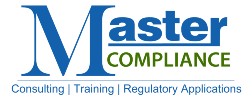Running a broker-dealer is not an easy task. Firms must remain in compliance with many securities laws, rules, and regulations issued by the SEC, FINRA, or MSRB or risk getting fined, or even worse, shut down. Firms should not take short cuts when it comes to investing in their compliance department. The compliance department should stay on top of securities regulations so that it can ensure that the firm remains in compliance. Like any business, broker-dealers evolve and begin new business ventures. However, unlike most businesses, broker-dealers aren’t left with the decision to ultimately decide for themselves what business they will ultimately delve into. Broker-dealers must often first seek approval from FINRA prior to engaging in new business ventures.
The compliance department of a broker-dealer should understand what events trigger the requirement for a firm to notify FINRA and file a CMA, also known as a Continuing Membership Application. If a broker-dealer decides to participate in a merger with or acquisition of another member firm then the firm must file a CMA with FINRA. Other triggering events include a transfer of 25 percent or more in the aggregate of the firm’s assets, or a change in equity ownership or partnership capital of the firm that results in one person or entity directly or indirectly owning or controlling 25 percent or more of the equity or partnership capital. If a firm fails to file a CMA for any of these events then it is likely out of compliance with FINRA rule 1017 and may be subject to regulatory action, such as a censure and/or fine. FINRA also requires a firm to file a CMA for material changes in business operations, as defined in NASD Rule 1011(k). There are numerous changes that FINRA considers material. Among those changes are removing or modifying a business restriction, adding a business line that requires a higher net capital requirement, or adding a significant number of branches or personnel. It should be noted that adding a number of branches or personnel doesn’t always trigger the requirement to file a FINRA CMA application. Certain firms will be eligible for FINRA’s safe harbor expansion as discussed in NASD IM 1011-1.
Filling out FINRA’s CMA application can be a complex task. The application is broken down into 14 sections, or as FINRA calls it, 14 standards. The applicant must satisfy all 14 standards by providing a substantial amount of detailed information. It is not a good idea to rush through the application; firms should take careful consideration in planning and deciding what information to provide. Once all information is gathered, a CMA can be filed through FINRA Gateway on the electronic Form CMA. Much like the process for filling out Form NMA, an examiner will be assigned to review the application. To get a better understanding of the information presented in the application, FINRA may request additional information or even request that the Firm participate in a membership interview. The completion of a membership interview does not mean that FINRA has everything it needs. Even after the membership interview, additional information may be requested. The process may take up to six months to complete. The quickest and most efficient way to get through the CMA process is to provide FINRA everything it needs when initially filling out and submitting the CMA within FINRA Gateway. However, than can be easier said than done.
Although this blog focused on FINRA’s regulation regarding changes to a member firm’s business, broker-dealers have a long list of Rules that they must follow in order to remain in compliance. Any time a firm fails to comply with regulations, FINRA may pursue an action against the firm. The compliance department should be sophisticated enough to understand, interpret, and implement programs for the firm to remain in compliance.
Located in Atlanta, Raleigh, Charlotte, and St. Louis
Showbox Not Working is the most unfortunate issue individuals ever confront while utilizing Showbox App showbox not working 2017 Before all else, there was no issue experienced by individuals while utilizing Showbox application on any stage, for example, Android, Blackberry, MAC, PC
